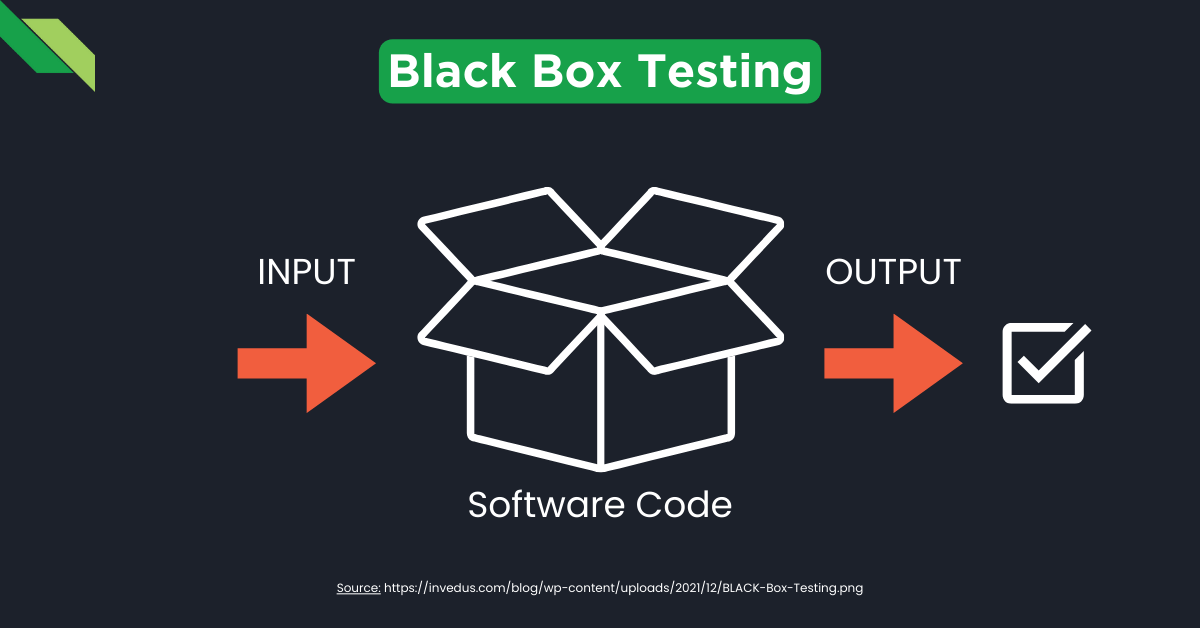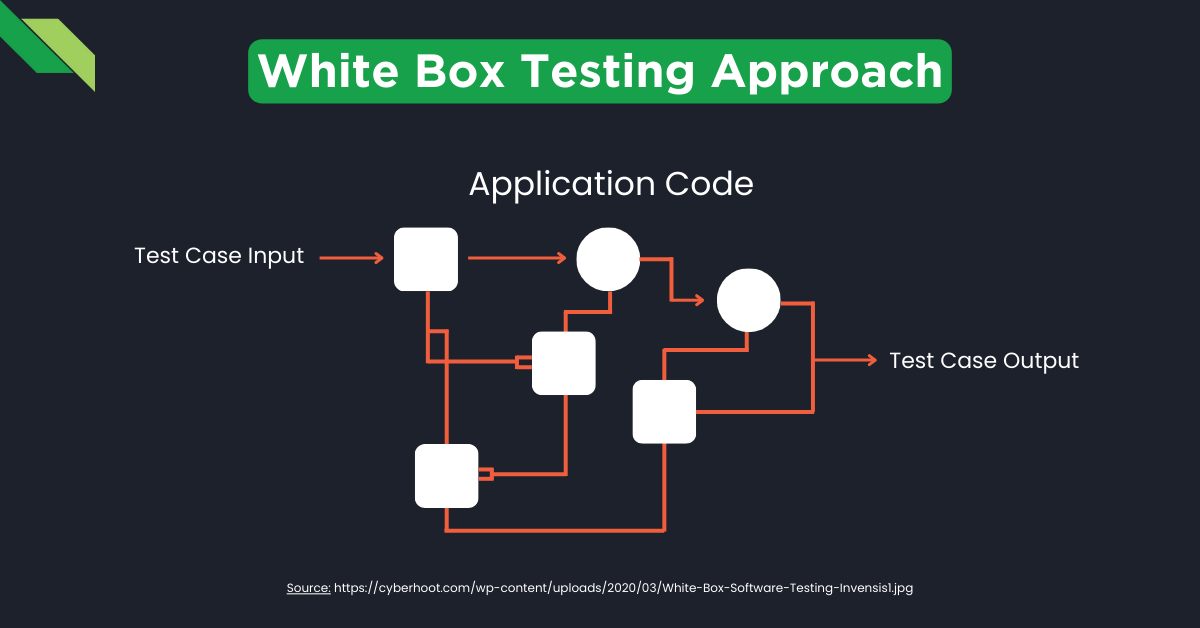Last Updated on 2024-10-11
Another thing to keep in mind when outsourcing your software development is thorough testing.
Software testing is critical if you want to deliver a high-quality product.
However, with various types of software testing available, it can be challenging to determine the best approach.
You’ve likely heard of two common testing methodologies: black box testing and white box testing.
What are the key differences between black box vs. white box testing? Are there use cases for each test you can review? How can you decide which to leverage for your project?
What is Black Box Testing?

Black box testing, also known as behavioral testing, is a software testing method in which the internal structure, design, and implementation of the software under test are not known to the tester.
The tester is only aware of what the software is supposed to do, not how it does it.
They evaluate the software from an end-user perspective by inputting data and examining the outputs without seeing the system’s inner workings.
Key characteristics of black box testing include:
- The tester does not know the internal code structure
- Tests are based on external expectations: the requirements and specifications
- Applies to all levels of software testing: unit, integration, system, and acceptance testing
What is White Box Testing?

On the other hand, white box testing (also called clear box testing, glass box testing, transparent box testing, and structural testing) is a method in which the tester has complete visibility of the software’s internal structure and coding.
The tester chooses inputs to exercise paths through the code and determines the expected outputs.
White box testing is based on the application’s internal structure and revolves around internal testing.
The tester must understand the code inside out to perform this type of testing.
Key characteristics of white box testing include:
- Tester has full knowledge of the internal workings of the software
- Tests are based on coverage of code statements, branches, paths, and conditions
- This applies to the unit and integration testing levels
Black Box vs. White Box Testing: Comparative Overview
Now that you understand black box vs. white box testing, let’s summarize how they compare.
| Category | Black Box Testing | White Box Testing |
| Tester | Tester does not know the internal workings | Tester has full knowledge of internal code |
| Focus | On external behavior and functionality | On internal structure and paths |
| Application | This applies to all levels of testing | This applies to unit and integration testing |
| Speed and Cost | – Fast test case development – Low cost | – Low and expensive test case design – Expensive |
| Use Case | Convenient for large code segments | Used for mission-critical modules |
| Coding Requirement | It does not require programming knowledge | Requires strong programming skills |
While black box testing and white box testing are separate approaches, they are often used together to achieve the most thorough testing.
Black Box vs. White Box Testing: Key Differences and Similarities
To further clarify, here are the main differences and similarities between these two testing methods:
Key Differences:
- Knowledge of internal code (black box – none, white box – full)
- The granularity of testing (black box – high level, white box – low level)
- Skill level required (black box – little to no programming, white box – strong programming skills)
- Time and cost (black box – fast and cheap, white box – slow and expensive)
Key Similarities:
- The ultimate goal of ensuring software quality and reliability
- Both methods can find errors and defects
- They can be used together for comprehensive testing
Use Cases: Black Box vs. White Box Testing
The type of testing you choose depends on the specific goals and circumstances of the project.
Here are some common use cases to guide you.
Use black box testing when:
- The tested feature is based on a black box design
- The tester does not have access to the source code
- The tested feature is ready for final testing before release
- Testing the user interface and user experience
Use white box testing when:
- The tested units are based on a white box-designed code
- Testing algorithms and data flow
- Performing security and penetration testing
- Conducting optimization testing
- Testing individual units for errors or bugs
Black Box vs. White Box Testing: Which Should You Choose?
In deciding between black box vs white box testing (or using them together), consider the following factors:
- The amount of time and budget for the project
- The skill set of your testing team
- The complexity and criticality of the software
- The stage of the development process
- The software testing objectives
In most cases, combining black box testing to evaluate the overall functionality and white box testing to assess the structural soundness will maximize your test coverage.
Partner With Full Scale for Expert Software Testing
Thorough testing is essential to the success of any software project, but assembling an experienced testing team while juggling development and other startup challenges is no easy feat.
That’s where Full Scale comes in.
As a leading offshore software development company, Full Scale offers:
- Extensive experience in both black box testing and white box testing methodologies
- Skilled testers well-versed in manual and automated testing
- Flexibility to seamlessly integrate with your existing team
- Quick and affordable access to top-tier QA talent
- Testing customized to your project’s unique requirements and objectives
Don’t leave the quality of your software to chance. Partner with Full Scale for the expert testing you need to deliver an exceptional product on time and within budget.
Build A World-Class QA Team

Matt Watson is a serial tech entrepreneur who has started four companies and had a nine-figure exit. He was the founder and CTO of VinSolutions, the #1 CRM software used in today’s automotive industry. He has over twenty years of experience working as a tech CTO and building cutting-edge SaaS solutions.
As the CEO of Full Scale, he has helped over 100 tech companies build their software services and development teams. Full Scale specializes in helping tech companies grow by augmenting their in-house teams with software development talent from the Philippines.
Matt hosts Startup Hustle, a top podcast about entrepreneurship with over 6 million downloads. He has a wealth of knowledge about startups and business from his personal experience and from interviewing hundreds of other entrepreneurs.




